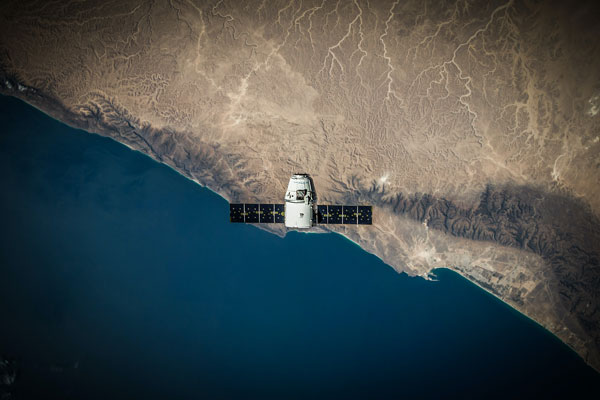Retired NASA spacecraft crashes on Earth and brings concern to space debris

[A satellite orbiting Earth. Credit to Pexels. Photo Credit to Pexels]
On April 19th of 2023, one of NASA’s retired satellites re-entered Earth’s atmosphere- 21 years after its launch- raising public distress about the harm the impact could have caused.
The Defense Department has relayed that the satellite crashed at 9:30 PM Eastern Time.
The satellite landed over the Sahara Desert region near Sudan.
Its exact location was confirmed to be 21.3 degrees north latitude and 26 degrees east longitude.
Many were worried that the possible impact of the satellite could cause harm during reentry.
However, scientists have assured the public that most of the satellite would have burned down during reentry.
“But some components are expected to survive reentry,” NASA stated.
It further added that the “risk of harm coming to anyone on Earth is low,” or around a 1-in-2,467 chance.
NASA reports that there were no casualties from the crash.
The name of this spacecraft was RHESSI.
RHESSI stands for Reuven Ramaty High Energy Solar Spectroscopic Imager.
Rhessi was launched back in 2002, onboard an Orbital Sciences Corporation Pegasus XL rocket.
The mission was “to image the high-energy electrons that carry a large part of the energy 3released in solar flares.”
The Goddard Space Center in Maryland had been overseeing its operation for the past 16 years.
The 300-kilogram satellite conducted solar flares and coronal mass ejection (CME) of the sun.
Solar flares and CMEs are gigantic clumps of plasma emitted from the sun due to magnetic activity.
It is essential to study these as they release an equivalent of billions of megatons of TNT into space.
This can have consequences on Earth, disrupting electrical grids and leading to blackouts.
The Rhessi had proven to have been very valuable to NASA.
During its mission tenure, RHESSI recorded more than 100,000 X-ray events, allowing scientists to study the energetic particles in solar flares.
The imager assisted researchers in understanding where the particles were being accelerated through their frequency and location.
RHESSI even made discoveries unrelated to flares, such as improving measurements of the Sun’s shape, and showing that terrestrial gamma-ray flashes – bursts of gamma rays emitted from high in Earth’s atmosphere over lightning storms – are more common than previously thought.
Rhessi was decommissioned after its communications failed in 2018.
It has hence been floating around in orbit for 5 years until it crashed back onto Earth.
However, the event of spacecraft plummeting back onto Earth isn’t a rare one.
In the past 4 months alone, around 7 satellites from NASA have reentered the atmosphere, although all of them have been harmless.
This draws attention to a surprisingly urgent crisis; space junk.
There are tens of thousands of space debris floating around near our atmosphere.
Space debris, or space junk, is any piece of machine left by humans in space.
It refers to big objects such as dead satellites that have failed or been left in orbit at the end of their mission.
It can also refer to smaller things, like bits of debris or paint flecks that have fallen off a rocket.
There are around 34,000 pieces of space junk bigger than 10 centimeters in size and millions of smaller pieces that could nonetheless prove disastrous if they hit spacecraft.
Although space debris does not pose an immediate threat to space travel, there is a concerning future possibility of the “Kessler Syndrome.”
The Kessler Syndrome was an idea proposed by NASA scientist Donald Kessler in 1978.
He stated that too much space junk in orbit could result in a chain reaction where more and more objects collide and create new smaller pieces in the process, to the point where Earth's orbit becomes unusable.
This would be an extreme case scenario, but some experts worry that a variant of this could be a problem one day, and steps should be taken to avoid it ever happening.

- Ian J. Kim / Grade 8
- Asia Pacific International School

![THE HERALD STUDENT REPORTERS [US]](/assets/images/logo_student_us.png)
![THE HERALD STUDENT REPORTERS [Canada]](/assets/images/logo_student_ca.png)
